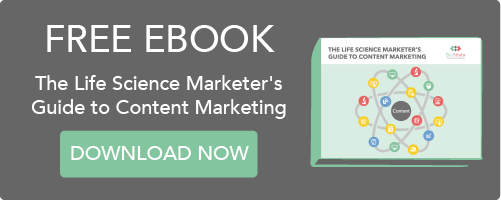In a previous blog, we briefly discussed the importance of ensuring that your life sciences marketing strategy places your customer front and centre and speaks to them on a human level. But as a science-oriented company, how do you accomplish this while still communicating key information about your product at a technical level?
Here are a few pointers:
Tell a story and offer an experience.
We are, ultimately, a species of storytellers. And no matter how matter how streamlined, bite-sized and “nanotised” our communications technology and media become, people will always respond better to some kind of narrative. This is important to keep in mind when creating your marketing content, as you’ll not only keep your readers attention for longer – they’ll also have a deeper understanding of your message and brand ethos as well. Even when your content is speaking rather explicitly about the technical details of your product and what your company actually does, try to frame it as a deus ex machina in the wider story ark of the reader’s frustrations and conflict. Basically, feel free to channel your inner Philip K Dick (ideally with a touch less dystopia).
Make full use of your buyer personas.
Speaking of superhuman android replicants, your buyer personas should play a defining role in the design and execution of your life sciences marketing strategy. They should be a humanising anchor that keeps your messaging targeted and relevant to the life experiences of genuine people. You should make a concerted effort to put yourself in their virtual shoes, empathising with their pain points and relating their roles to your own. The best way to do this is to continually research your personas and update your persona templates as they evolve.
Don’t write for the bots.
As tempting as it may be to cut your losses and appease our robot overlords, it’s entirely the wrong approach for an effective, results-driven life sciences marketing strategy. While it’s important to optimise your content for SEO purposes, that shouldn’t be the end goal of your content marketing strategy – it should be to appeal to your target audience. There are two main reasons for this. First, the bots are increasingly intelligent and capable of identifying black hat SEO, so it may prove counterproductive; and second, your content will fail to engage the people on the other end that you’re trying to reach in the first place. But make sure you don’t ignore SEO best practices completely – the robots are fickle masters and need their pound of (search engine optimised) flesh.
Understand your brand’s personality.
A large part of being human is interacting with other humans. With this in mind, one of the best ways to humanise life science marketing is to have a coherent and consistent voice for your brand’s messaging. Your content should embody your brand’s personality. Getting this right involves compiling a comprehensive style guide that’s applied throughout your digital marketing content offerings. The trick is to find a voice that’s versatile enough to speak to each persona, while still being distinctly you.
While it can be challenging to create scientific content that is interesting, engaging and designed to deliver business results, this needn’t be the case! Download our Content Marketing guide to learn more.





